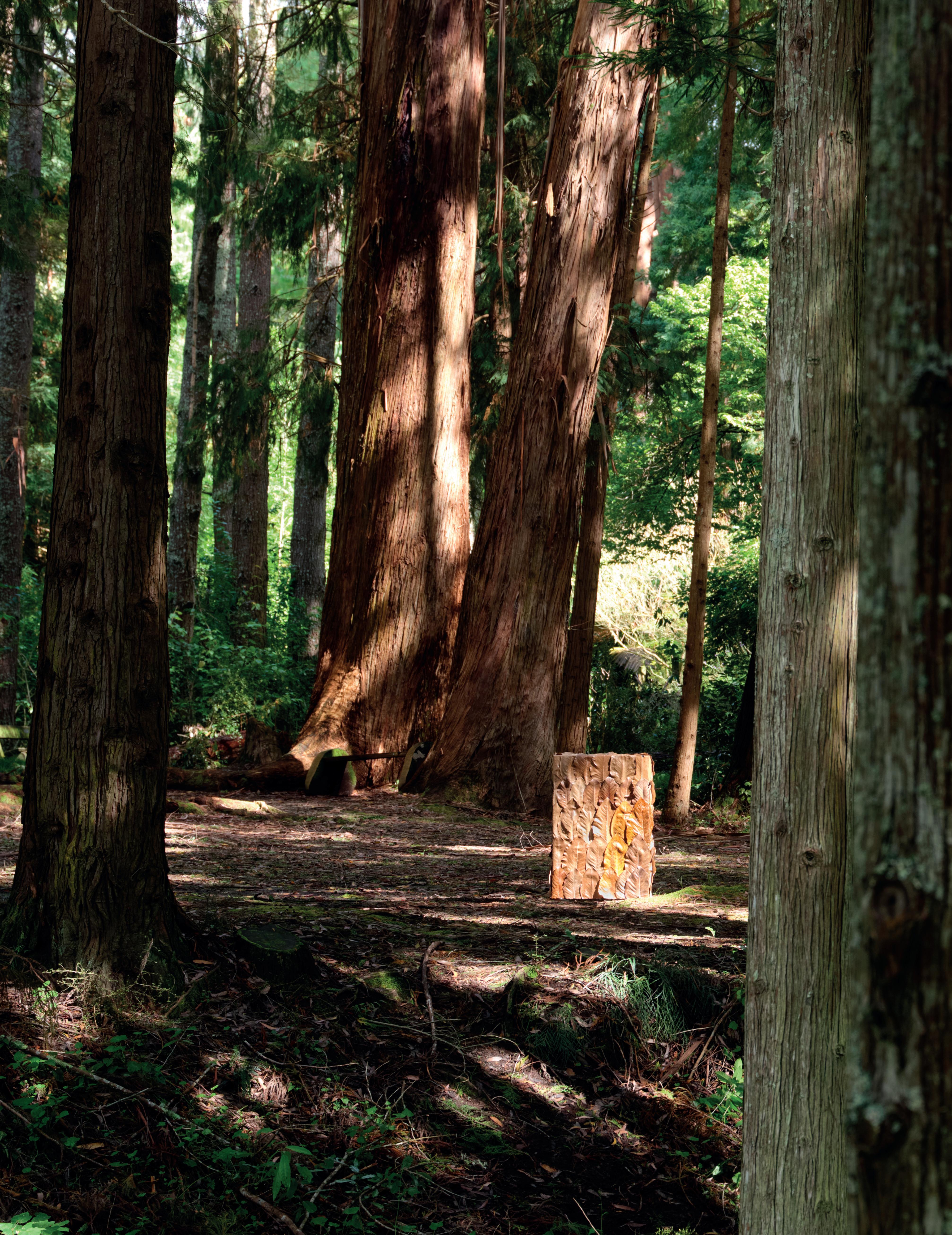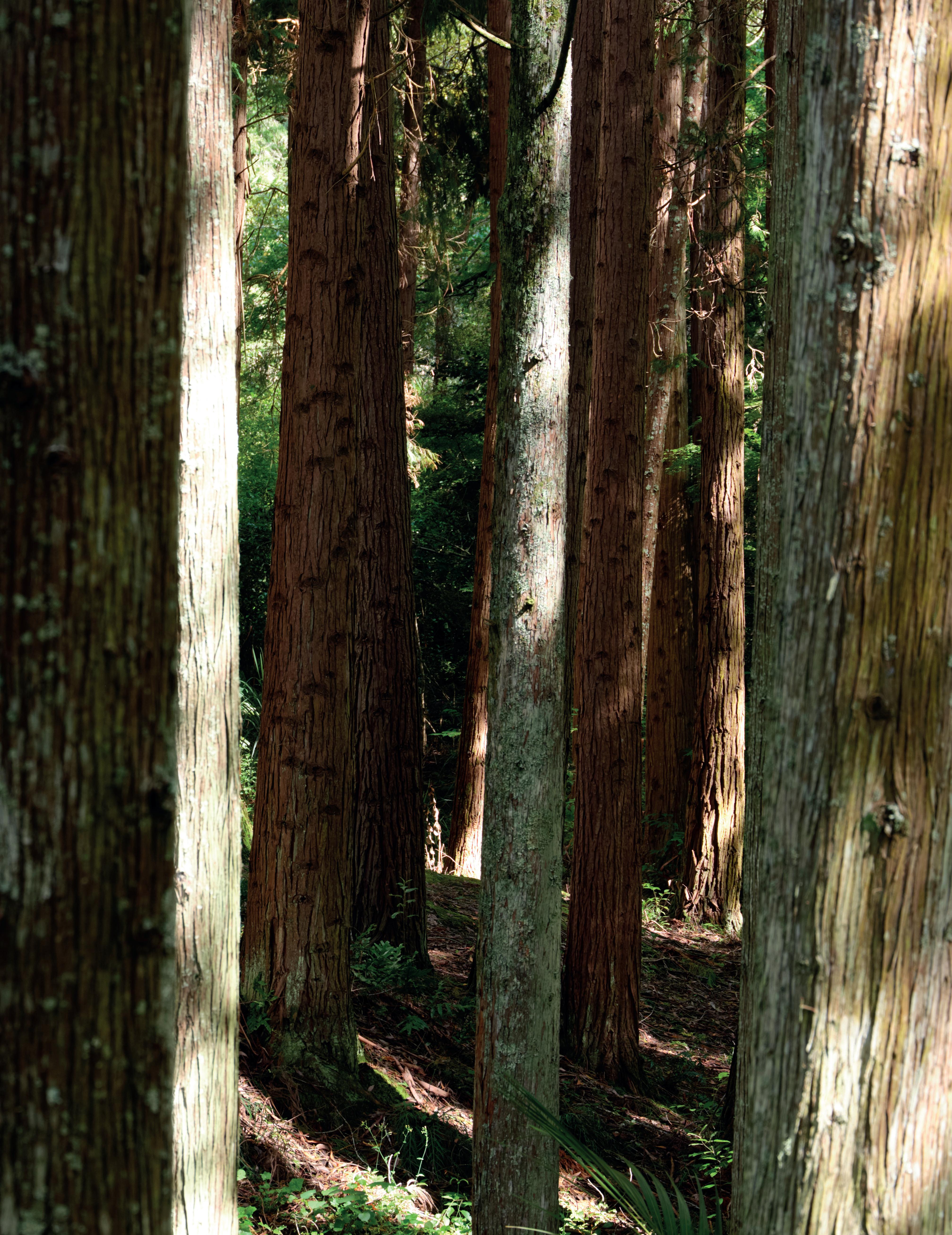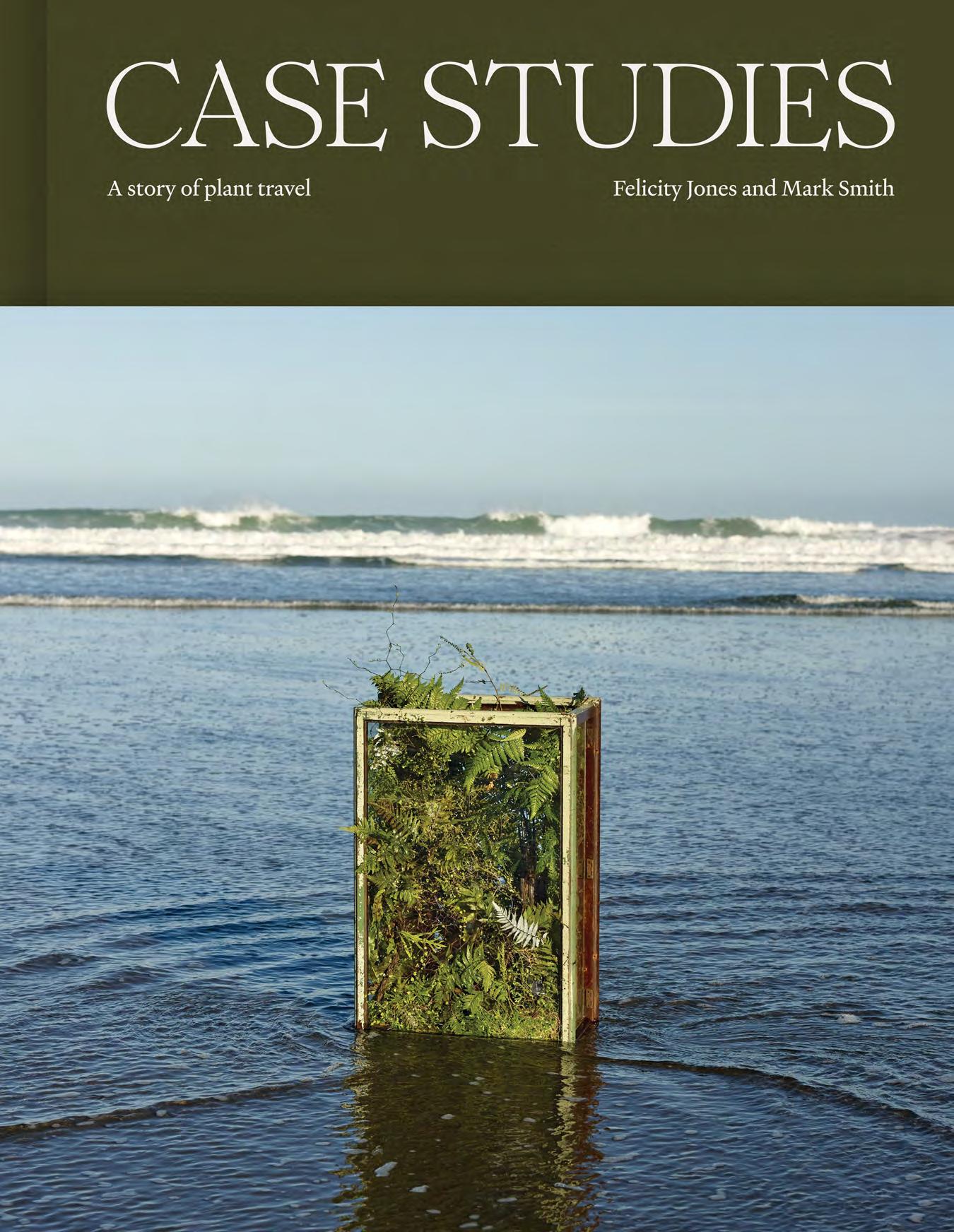
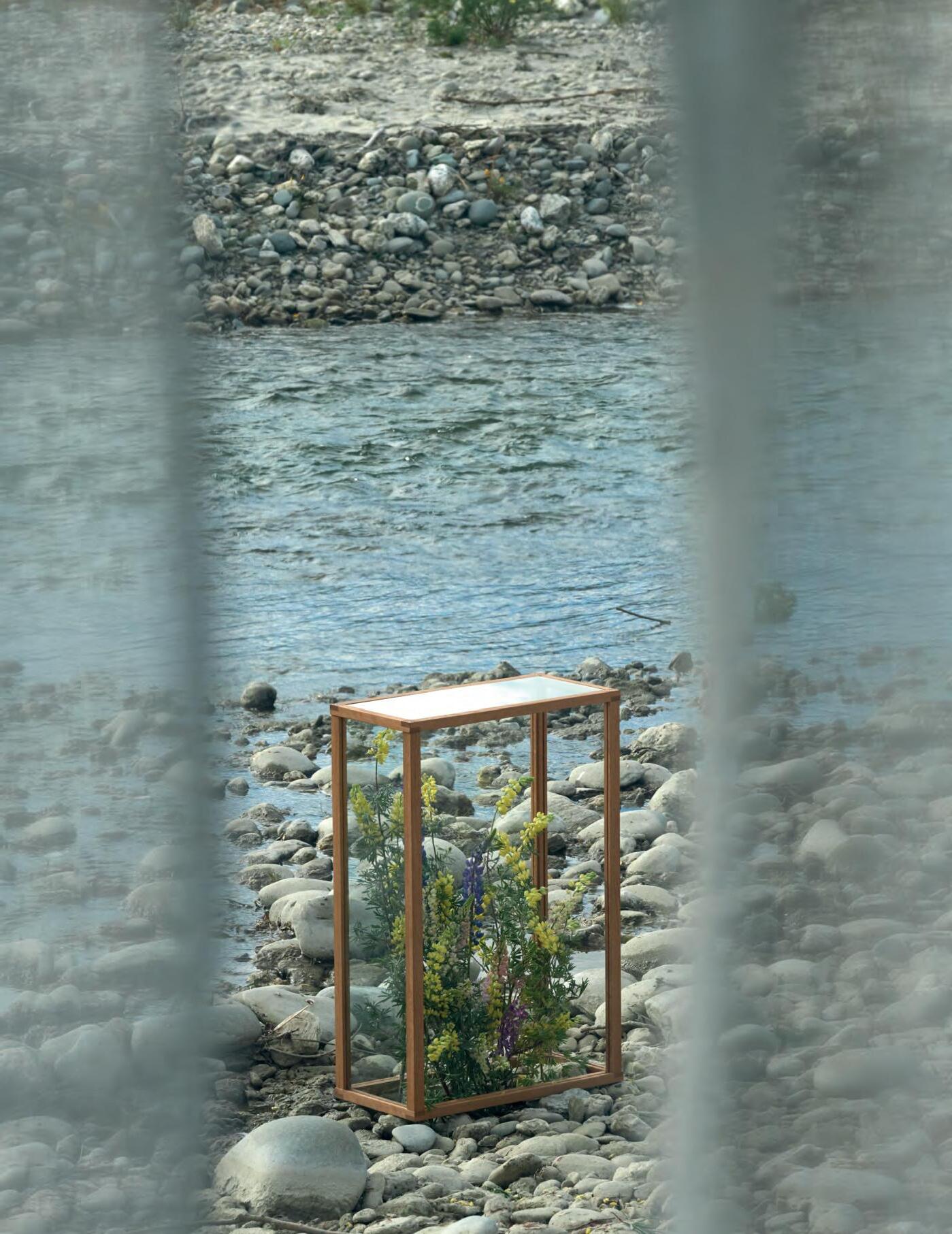




Felicity Jones and Mark Smith
Introduced by Gregory O’Brien
O’Brien
To place a glass case containing foxgloves or roses in a stand of native New Zealand bush is to inadvertently make an historical/cultural/ political statement. The exact intent and nature of that statement, however, might be a matter of some complexity. This book, Case Studies, is firstly an art project, yet it also tells a story of ecological colonialism, harking as far back as botanist Joseph Banks on Captain James Cook’s first voyage. With the invention of a glass-sided and sealed miniature greenhouse in 1829, the narrative gathers further momentum. The ‘Wardian case’ — as the travelling terrarium came to be known — is the centrepiece of Case Studies.
‘We wanted to highlight the collision of the botanical and cultural worlds,’ Felicity Jones has written of the project, which grew out of her longstanding interest in the history of gardening, plants ‘and how it is they connect us emotionally to the past’. In the course of her botanical researches she became fascinated by the Wardian case, not only as a vessel for floral arrangement but also as an artistic motif/device. A miniature theatre in which ideas and forms could play.
In 2018, she approached the photographer Mark Smith about the possibility of working together on the photograph which would become the first in the series — Dr Ward’s Case #1, Import, Te Henga (see page 41). Arriving at the west coast beach not only with a carload of equipment and flowers but also each with their own complement of preoccupations and personal attachments, Felicity and Mark realised at once that this botanical narrative was worth pursuing on a larger scale, longer term, and working collaboratively.
While the legacy of Empire and colonisation forms a dense canopy over the burgeoning groundcover of the project, the resulting works are, at the same time, predicated on subtler and often surprising strands of thought and feeling. Maybe Case Studies amounts to a reclaiming of floristry as a serious form of artistic expression — moving beyond conventional or utilitarian definitions. To Felicity’s mind, floristry, as both an industry and a mode of expression, is interventionist by definition. It involves the growing, harvesting and arranging of natural materials, with human judgement being exercised every step of the way. The photographic side of the project required similar amounts of planning and preparation, along with much travel time on account of the site-specific nature of the photographic tableaux: ‘We photographed gorse out on the west coast, looked at the humble cabbage and the important kūmara at Te Parapa Garden, at the Hamilton Gardens, and continued down-country to where the forestry industry and Pinus radiata have established themselves for better or Pōhutukawa, Te Henga, 2025



Kūmara and cabbage, Te Parapara, Hamilton Gardens, 2019
The Polynesian ancestors of Māori had to adapt their growing techniques to suit the cooler climate of their new home, and as the first gardeners of Aotearoa they also introduced exotic plants. One of the most successful of these was kūmara (Ipomoea batatas) or sweet potato, which was introduced in around the thirteenth century. The kūmara plot at Te Parapara within Hamilton Gardens is a beautiful showcase of these adaptations. We added to this story with a much later European introduction, the humble cabbage, Brassica oleracea var. capitata. FJ

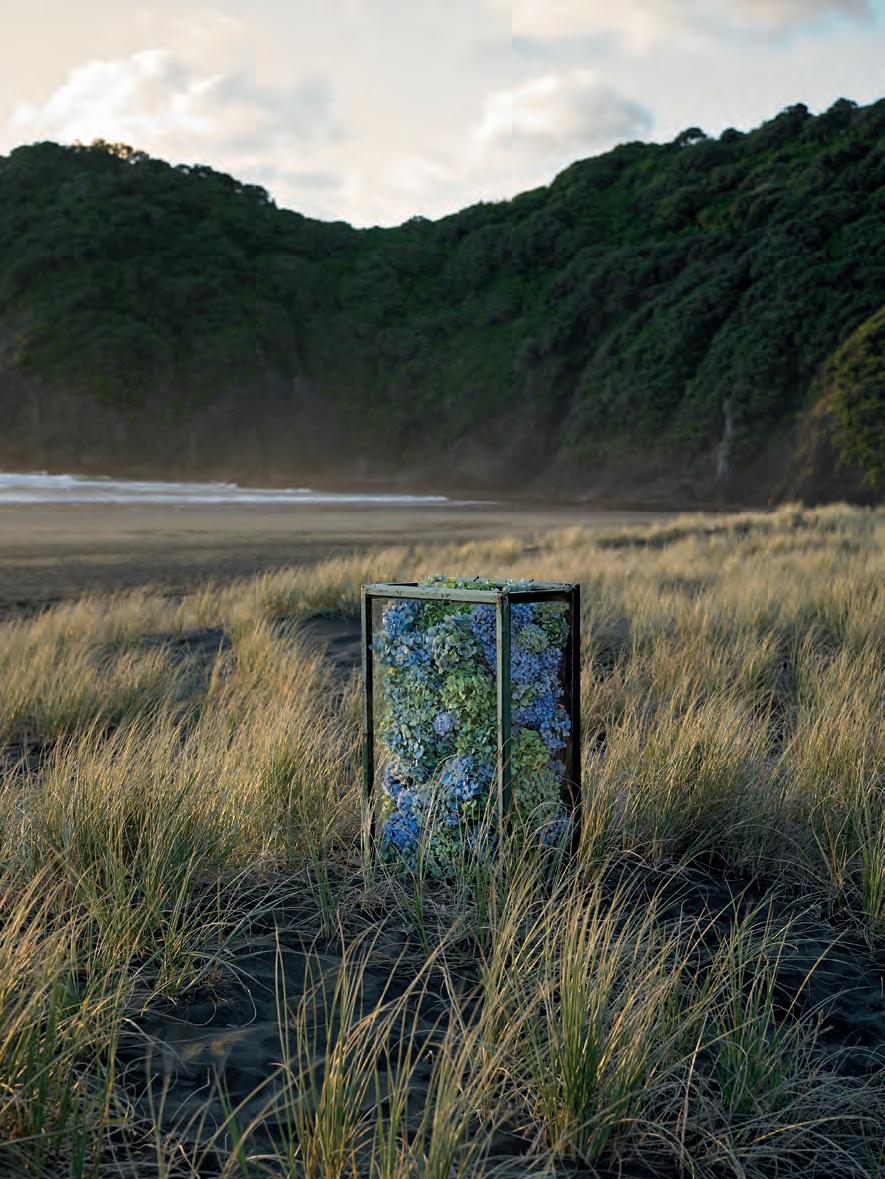

Luke Keogh
In 1829 the doctor and amateur naturalist Nathaniel Bagshaw Ward placed the chrysalis of a moth, soil and dried leaves inside a glass bottle and screwed the cap on tight and placed it on a windowsill. It was an experiment; he was waiting to see if the moth would hatch. As he waited and watched something else sprouted inside the bottle — a fern and meadow grass. The moth hatched and was let go. But it was the plants that grew inside the bottle that captured Ward’s attention.
A keen naturalist, Ward had tried for many years to get the fern to grow in his London garden, but the polluted city air that surrounded his Wellclose Square home prevented it. Inside the bottle, however, the fern thrived.
Ward had discovered a new method to keep his plants alive. Under glass, so long as there was sunlight and moisture inside the case, plants could survive in this microenvironment for long periods. Ward suggested they could survive as long as eight months without watering. The Wardian case was discovered.
The wider implications of the invention were for the long-distance transport of live plants. For much of the eighteenth and early nineteenth century, transporting plants between countries amounted to a great challenge. In 1819 John Livingstone, a keen botanist and surgeon posted to Macao for the East India Company, estimated that only one in a thousand plants survived the journey from China to Britain.
Over the coming years Ward experimented further with plants under glass. In 1833, four years after the first invention, Ward decided to test his invention by transporting two of his cases filled with a selection of ferns, mosses and grasses from London to Sydney, the longest sea voyage then known. For these cases — variously known as ‘glazed cases’, ‘closed cases’ or ‘Wardian cases’ (after the 1840s) — to be successful, they needed to be stowed on the high rear poop deck of the ship which received the most sunlight. The case could be sealed for long periods without watering, but it needed sunlight. Made of timber and glass and only as high as the hip on a sailor, the Wardian case looked like a travelling greenhouse of sorts.
On 23 November 1833, Ward received a letter from Charles Mallard, the ship captain responsible for the two cases: ‘Your experiment for the preservation of plants alive . . . has fully succeeded,’ he wrote. 1 The plants that arrived in Sydney were thriving.
The next challenge was the return journey. In February 1834, the cases were replanted with specimens from Australia. Eight months later, Ward and his friend George Loddiges, of the famous Loddiges & Sons nursery in Hackney, went aboard the ship in London to inspect the plants. Ward wrote: ‘I shall not readily forget the delight expressed by Mr G. Loddiges, who accompanied me on board, at the beautiful appearance of the fronds of Gleichenia microphylla, a plant now for the first time seen alive in this country.’2 Surviving through heat and humidity at the equator and lashing snow on the way to the Thames, the experiment was a success.
The Wardian case, as it would become known, revolutionised the movement of live plants around the globe. The cases were used for over a century. In the
1. Charles Mallard to Nathaniel Bagshaw Ward, 23 November 1833, in Nathaniel Bagshaw Ward, On the Growth of Plants in Closely Glazed Cases (John Van Voorst, 1842), 77. See also Luke Keogh, The Wardian Case: How a Simple Box Moved Plants and Changed the World (University of Chicago Press, 2020).
2. Ward, On the Growth of Plants, 60.
3. Letter, William Symonds to William Jackson Hooker, 26 April 1842, in Directors Correspondence, Archives of the Royal Botanic Gardens, Kew.
cases, plants had a greater chance of survival when in transit. It was a simple yet revolutionary invention that had a major impact on the movement of species around the globe.
Planting a Wardian case was quite simple. Inside the case first you placed a layer of rocks or broken bricks, followed by a layer of sphagnum moss or leaf litter, and then a layer of soil. Once plants were in the soil, battens were often placed across the inside of the box to hold everything in place. The plants were well watered and often left to settle for a few days or even weeks. Often there was a hole in the base of the case that allowed water to drain before a plug was placed in the hole and they were ready for the journey ahead. Following this the case was closed up and not opened until the plants arrived at their destination.
Over the coming years the Wardian case would be used widely to transport plants. After the first successful transport, Ward’s friend Loddiges put into use 500 Wardian cases for his international shipments. In the nineteenth century it would become the primary means for transplanting live plants. In the century or more they were in use, they were utilised by nurseries, botanical gardens, plant explorers and agriculturalists.
In the 1830s in the far north at Te Hōreke, in the Hokianga, the settler Thomas McDonnell set up one of the first formal gardens in New Zealand. McDonnell already had an established network from his former life as a trader (in opium among other items) in China and India, and he used these networks to establish not only a timber settlement but also a garden to remind him of Europe. By 1840 Wardian cases arrived at these gardens filled with exotic plants that would not only fill the garden but also spread widely throughout both the north and south islands of New Zealand. Among other plants in this early shipment to reach Te Hōreke was the Italian jasmine (Chrysojasminum humile) — not that Italian at all, as it comes from China — which is now listed as an invasive plant across much of New Zealand.
The global network of live plant transports worked on the assumption that any cases sent, in particular from European imperial centres of science, would be returned filled with native plants from that country. And so it was with McDonnell’s plants. Kew Gardens sent plants to Te Hōreke with specific instructions that the cases be returned to London with plants unique to New Zealand’s North Island. The two Wardian cases were packed delicately by McDonnell’s gardener John Edgerley, filled with ferns and trees and other plants, and returned to London.
The Royal Botanic Gardens, Kew, would use the Wardian case extensively to move plants, particularly for their plant hunters and for sending plants to their network of botanical gardens in the colonies. In return many of their cases were returned with unique foreign plants that botanists at Kew would name and describe in their publications.
4. Royal Botanic Gardens Kew, Kew Plant Record Books, Inwards 1828–1847, ms.RBGK.
Throughout the nineteenth century, New Zealand played an important role in these case histories. In the early 1840s, not long after Ward’s invention had reached wide circulation, New Zealand plants were some of the first to travel in Wardian cases. In 1842 the first plants to arrive in Wardian cases at the Royal Botanic Gardens, Kew, were from New Zealand. Before any other country around the world contributed, three cases from New Zealand had arrived. The plants were ‘fresh’ and in a good state. 3 So healthy were the plants in one of the cases that two decades later one of the plants, a rimu tree (Dacrydium cupressinum), was still thriving in the Orangery at Kew at over 5 metres tall.4





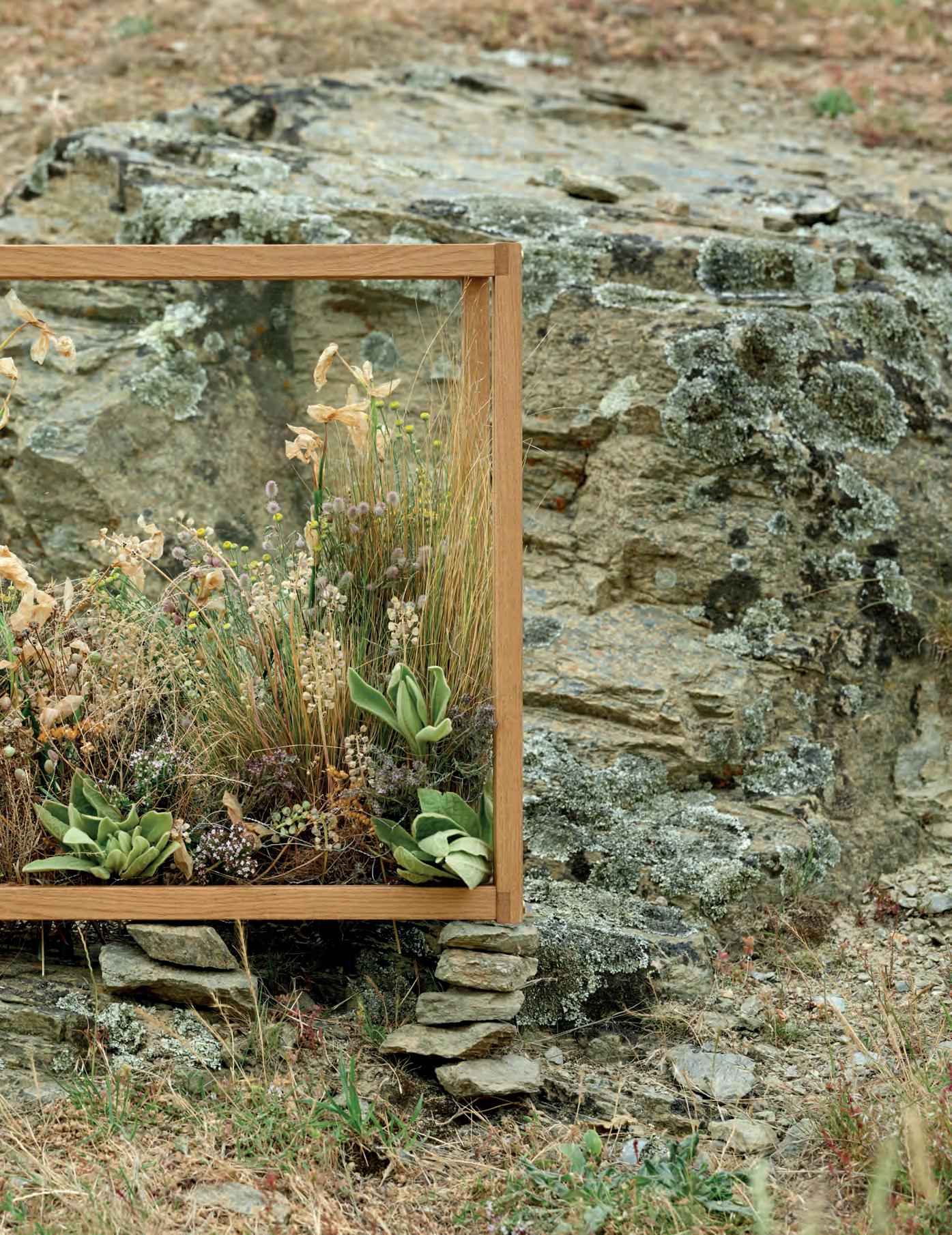
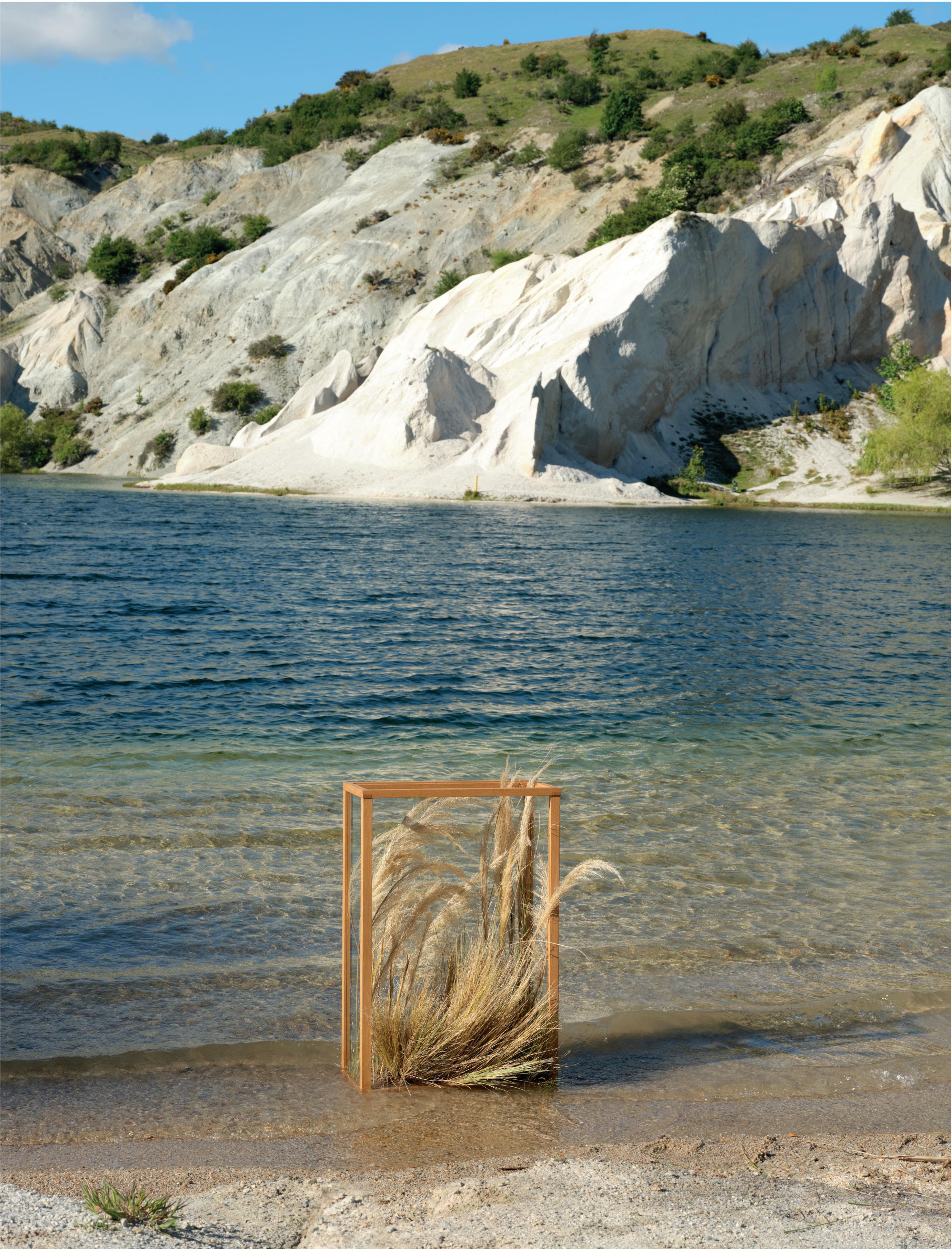

Above: Rhododendrons, Canterbury, 2020
Opposite: Dahlias, Warkworth, 2021
Following pages: Tulips, Auckland, 2018



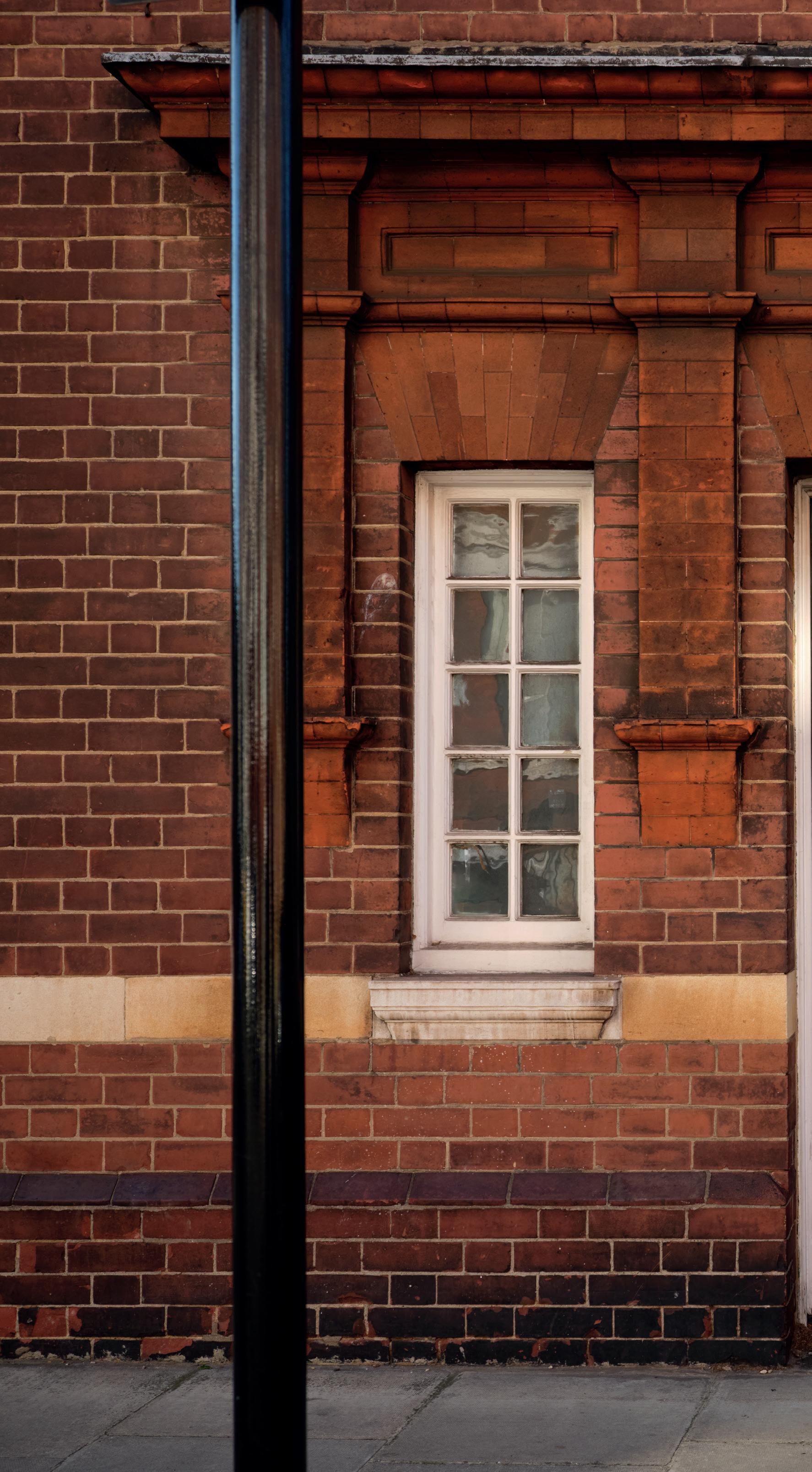

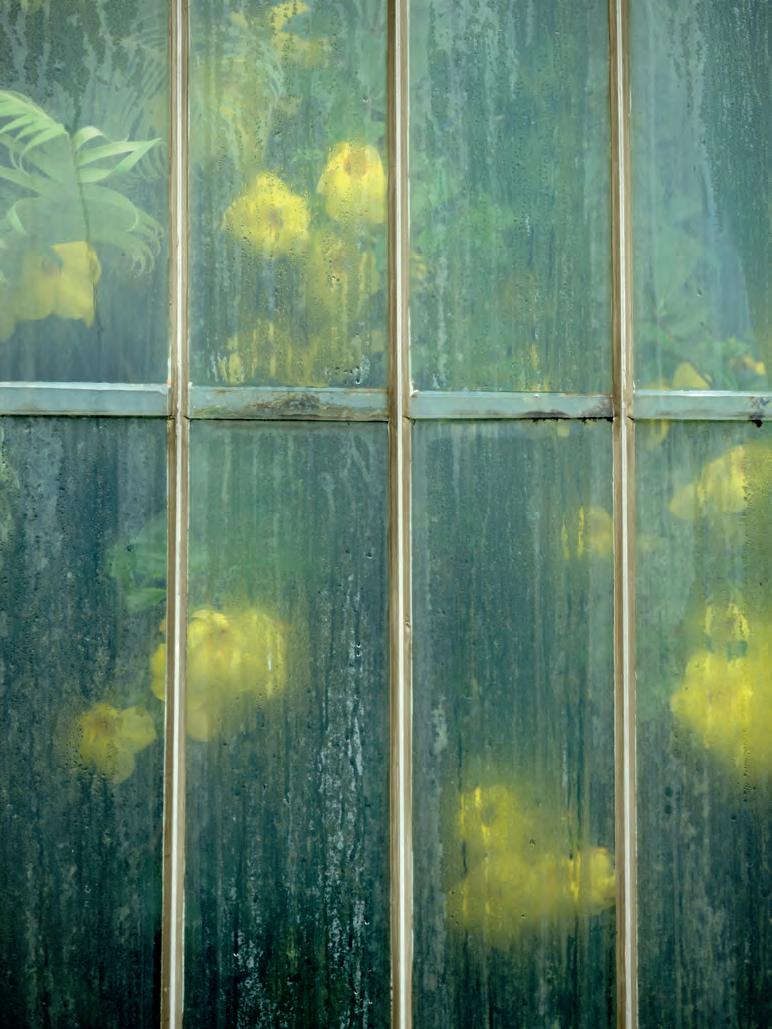
Just like Wardian cases returning to the northern hemisphere filled with plants from Aotearoa, so we travelled to the United Kingdom, to where these botanical endeavours first began. We sought out the motherlodes of seed banks and plant knowledge: the Royal Botanic Gardens at Kew, the Chelsea Physic Garden, the Oxford Botanic Garden and the Linnean Society.
In glasshouses, archives and gardens shaped by centuries of exploration we encountered the seeds and descendants of plants collected over the last 250 years. These specimens, preserved down the generations by careful tending, connect past and present and hold within them the reverberations of scientific curiosity, ambition and Empire.
Opposite: Kew Gardens, London, 2023
Following pages: Wardian cases, Kew Gardens, London, 2023
There are only 15 or so known original Wardian cases left in the world. Eight of them are at the Royal Botanic Gardens at Kew. FJ
Opposite and following pages: The King’s Entrance, Chelsea Physic Garden, 2024
The Chelsea Physic Garden, near the embankment of the Thames in London, is central to any exploration of global plant travel. It was established in 1673 by the Worshipful Society of Apothecaries as an outdoor classroom to train apprentices in general medical and herbal treatments. Teaching continued here until the 1970s, with students training to be pharmacists, the modern-day version of apothecary. Today the gardens contain over 4500 species of edible, useful and medicinal plants. After the Oxford Botanic Garden, Chelsea is the second oldest botanic garden in the United Kingdom, and home to the world’s first-ever heated glasshouse. Built in 1723 and stove heated, it was part of then head gardener Philip Miller’s quest to mimic growing conditions from across the world, including for tropical treasures like pineapples (Ananas comosus). In the Victorian era a new range of glasshouses enabled the growing global collection of plants to thrive. FJ
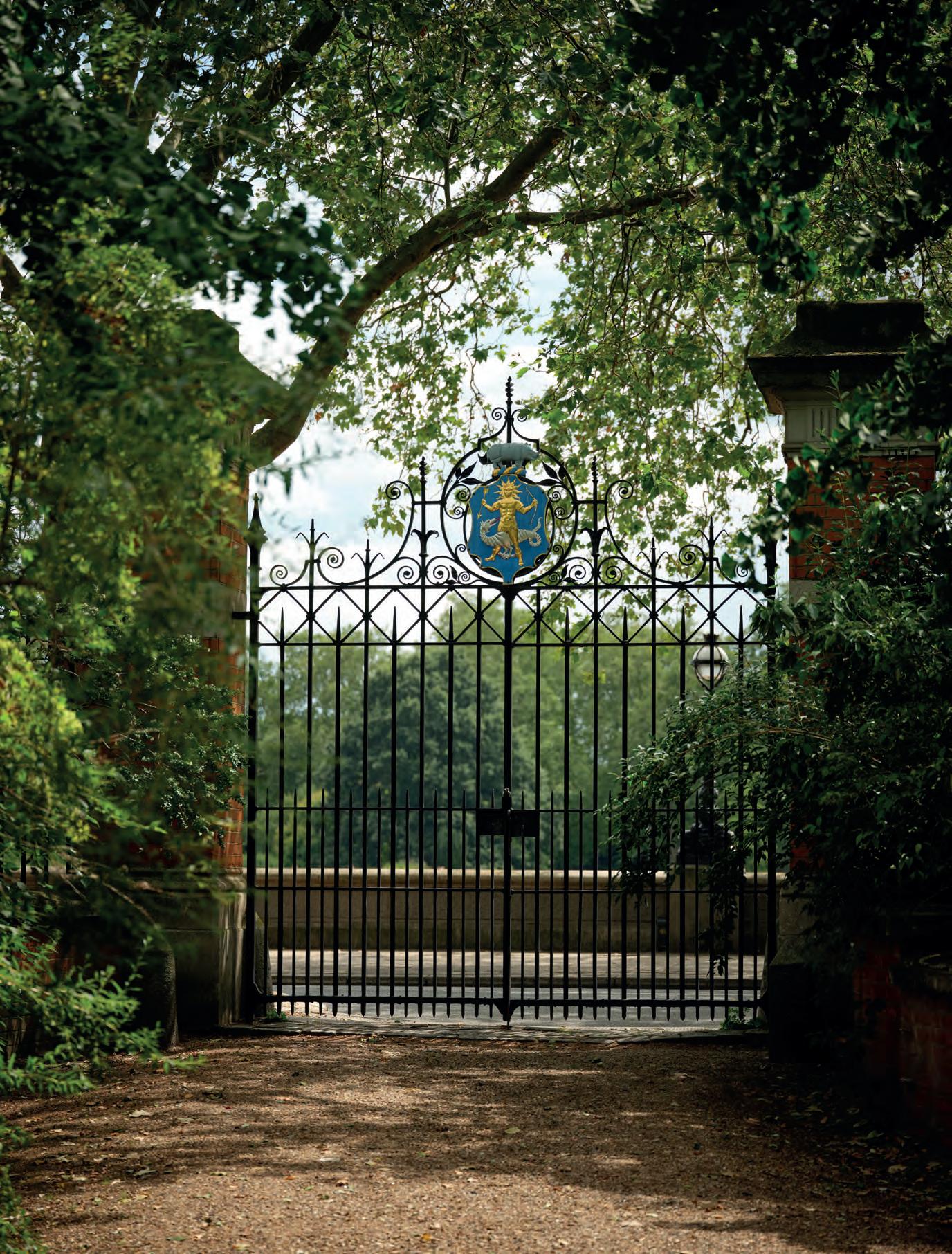
Opposite: Artificial hollyhocks, Natural History Museum, London, 2023
Following pages: Dr Ward’s grave, West Norwood Cemetery, London, 2023
Finding Nathaniel Ward’s final resting place in the 40-acre West Norwood Cemetery in South London took many hours. Using an old map, and pacing between ancient markers that we had to unearth, we finally found his unmarked grave under a thicket of brambles. MS
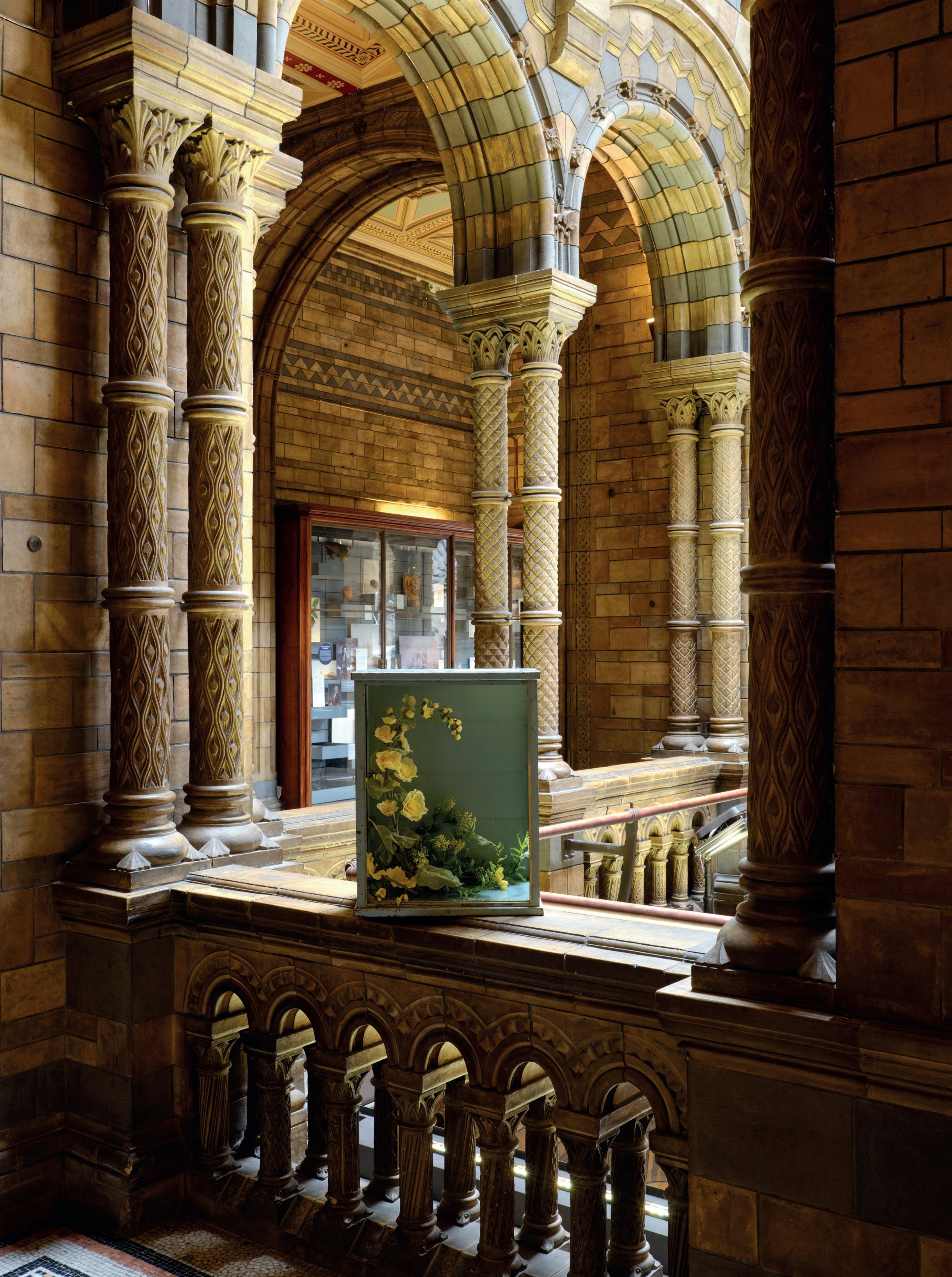


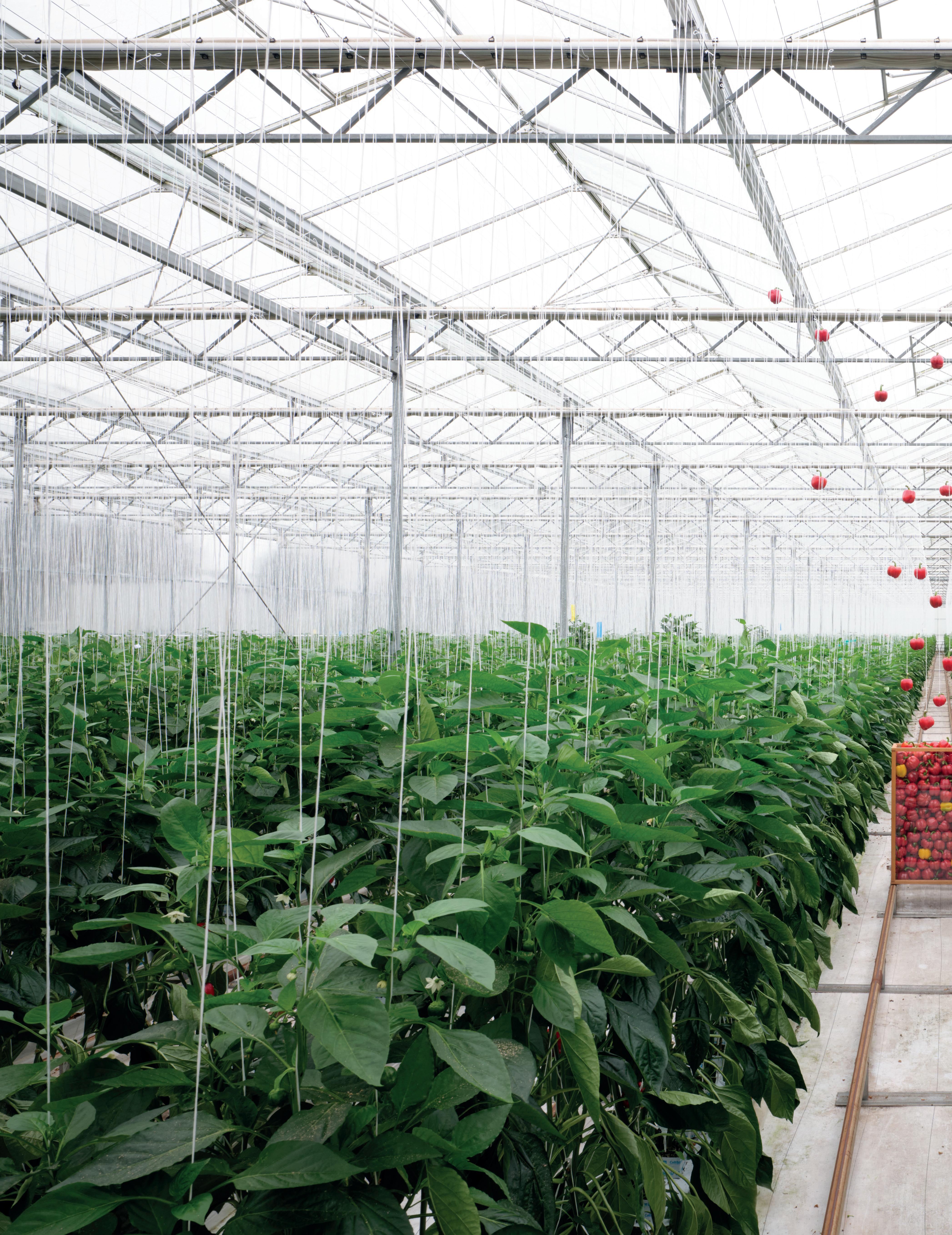
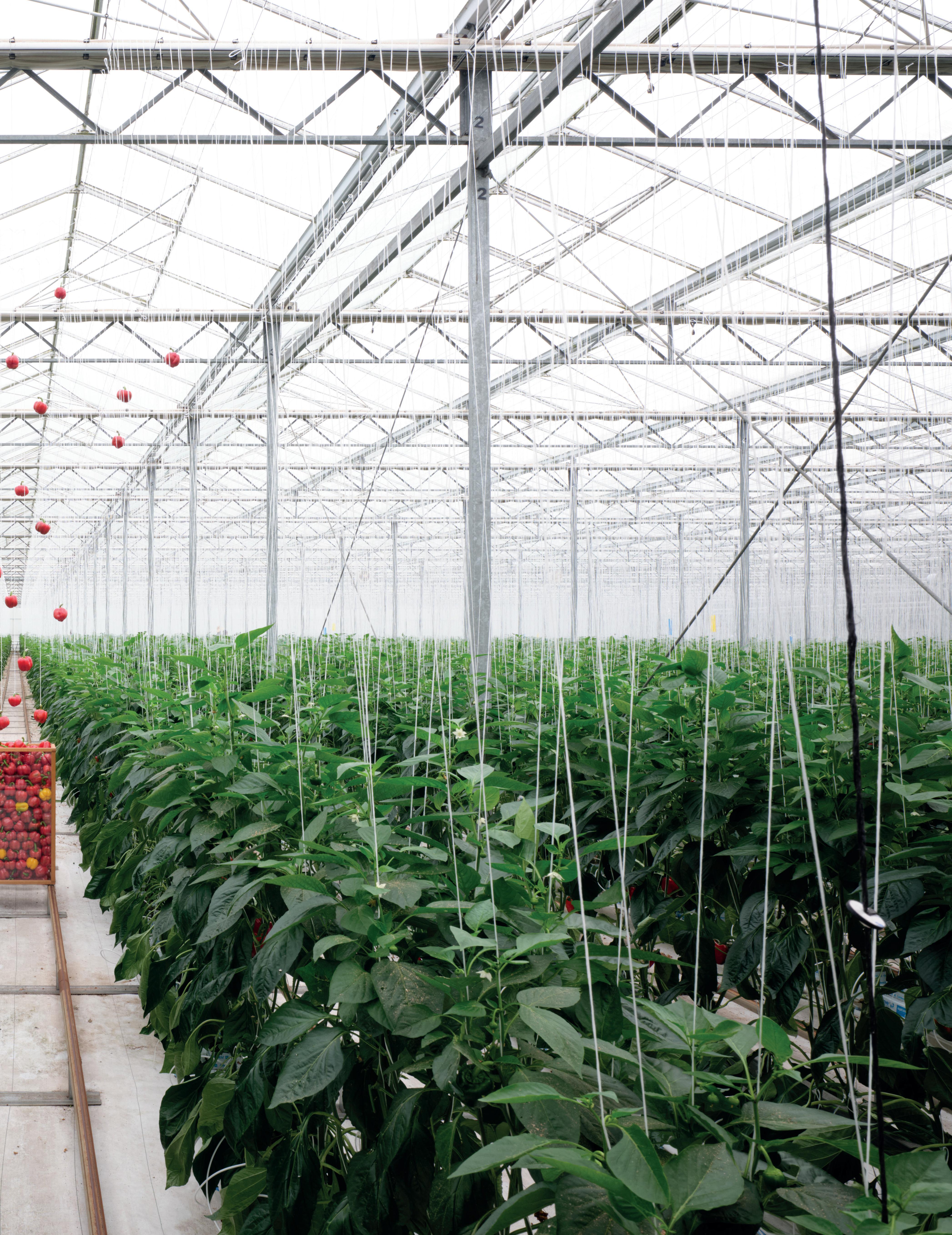


Since 2002, my hapū of Ngāti Tūkorehe has been uplifting existing fans of harakeke and replanting them around ephemeral streams and related wetlands in our rohe or region of Kuku, Horowhenua, in the south-west coastal region of Te Ika-a-Māui North Island. As part of this active revitalisation of these coastal wetland treasures, we have expanded the pā harakeke or plantations in the wetlands within our coastal farmlands. The kaitiaki or environmental guardians of our iwi and hapū have, in recent times, been earnestly re-engaging in a number of ways with harakeke, a taonga species within our rohe.
The contemporary artworks by Mark Smith and Felicity Jones aim to respectfully present specimens of this taonga species in natural surroundings, where they are reimaged/reimagined as part of ‘case studies’. It is through the Māori concept of cyclical time, in which collective Māori experiences of temporality define and shape experiential reality, that I experience these works.1 As Māori we acknowledge the past, present and future as all interconnected and flowing rather than following the linear progression usually promulgated within hegemonic, Western-centric temporal understandings.2 All our Ngāti Tūkorehe environmental engagements with harakeke to date are grounded by this understanding and underpinned by knowledge and experience of tūpuna or ancestors and kaumātua or elders now long gone.
Certain tensions are created when artworks that feature harakeke are not within the Wardian case but rather are attempts to encase or envelope it. Not only is this a unique departure from the duo’s other artworks, but also this Wardian case features a longitudinal and latitudinal weave of harakeke strips that cover one side and the top of the case, completed by a rudimentary plaited handle. Is this covered suitcase like making a traveller’s luggage unique so it is clearly identifiable and not lost in transit? Or perhaps it is more metaphorical in terms of the weight it bears because the Wardian case remains an historical instrument of nineteenth-century Enlightenment ontologies and imperial processes of industrialised colonisation, and a harbinger of the rampant capitalism that controls and subjugates Nature? If so, this Wardian case suggests the impact of imposed structures of temporal time that aim to dominate Nature.
We know the case usually enclosed a specimen within its glass walls, generating condensation from transpiration so that the plant could live out of its soil context — however, this conversely affects its mauri or life vitality as an isolated specimen entrapped and removed from ecological support and connections to its source
1. P. T. King, D. Cormack, R. Harris, S. L. Paine and M. McLeod, ‘“Never-ending Beginnings”: A Qualitative Literature Review of Māori Temporal Ontologies’, Kōtuitui: New Zealand Journal of Social Sciences Online 18, no. 3 (2022): 252–67. https://doi.org/10.1080 /1177083X.2022.2138467
2. Ibid.
3. Extrapolations sourced from www.kew.org/read-and-watch/ how-wardian-case-changedbotanical-world
location. In these images we can understand the Wardian case as first determined in 1829 by amateur botanist Nathaniel Bagshaw Ward, whose ‘accidental’ creation of a micro-climate carry-case for live plants transformed botanical science and enabled the mass transportation and relocation of plants via acclimatisation societies across the globe and back to the epicentre of ecological capture and global taxonomies — Kew Gardens in London, England. 3
I dwell on the Wardian case as an effective tool by which imperialism extricated plants from their intricate interconnections as related kin to local peoples and their whakapapa or genealogical reference systems and connections to cosmological narratives. Although this harakeke suitcase metaphor might suggest how harakeke soon became well-travelled because of its attractive virtues as a fibre, as harakeke it loses credibility when harnessed by knowledges that do not fully understand the holistic potential of the fibre from a Māori understanding. This is something that both Mark and Felicity are aware of, and it is their intention that the work foregrounds these tensions and gives rise to these kinds of questions.
Harakeke is imbued with connections to Hine-te-iwaiwa, the spiritual entity associated with weaving, childbirth and the moon. Hine-te-iwaiwa is the guardian of Te Whare Pora or the house of weaving, and so the invention of the Wardian case activated the taxonomising of the plant world and severed Indigenous peoples from their intricate knowledge of Te Taiao, the places of plant origin and the biodiverse richness within wetland ecosystems where pā harakeke flourished.
4. Sourced from the author’s PhD thesis, ‘Hei Whenua Ora: Hapū and Iwi Approaches for Reinstating Valued Ecosystems within Cultural Landscape’ (Massey University, Palmerston North, 2007), 37. See full document at http://hdl.handle. net/10179/2133
As an edifice of imperialism, the case also exists within other introduced structures and methods of logical entailment and causality where it cannot unravel Indigenous processes of knowing. Indigenous peoples’ worldviews remain cognitive maps of ecosystems. Indigenous, customary or traditional knowledge is rooted in local culture, where knowledge is the source of ‘knowing’ cosmology as inseparable from the multiple tasks of living well in a specific place over a long period of time.4
At the time Dr Ward was inventing his terrarium, within the Kuku region our ancestors of Ngāti Tukorehe (as allies of the warrior chief Te Rauparaha and at the behest of Waitohi, his sister) were embarking upon organised migrations into Horowhenua so that they would live closely again with new wetlands and coastal lakes and restrengthen new pā harakeke and harness the exceptional properties of harakeke. Harakeke and the metaphor of ‘whakahokia ki te whanaungatanga o te pā harakeke’ allows to us return to the familial connections that are created by expansive stands of harakeke. Harakeke benefits human wellbeing, birthing processes and reconnections to place from a whole-of-plant perspective replete with whole-ofsystem rongoā or medicinal qualities.
For all our kaumātua who interpreted our place from when we moved from Te Kaokaoroa o Pātetere in southern Waikato to Kuku — and according to what had been transposed to them or garnered from their own cognitive maps of reasoning, intuition and perception over generations — our roles in Kuku today are to hold fast to these integral hapū relationships to land, wetlands and waterways and to improve the biodiversity and quality of ecosystems. Therefore, our Indigenous concepts of healing and ecological sustainability within supported systems remain locationspecific because our experiences of place were arrived at through unique relationships developed between ancestral social and ecological arrangements.
